September 22, 2023 – Join us on a journey as we unravel the captivating world of Blaufränkisch, with its diverse flavors, rich historical tapestry, and its intriguing counterpart in Croatia called – Frankovka.
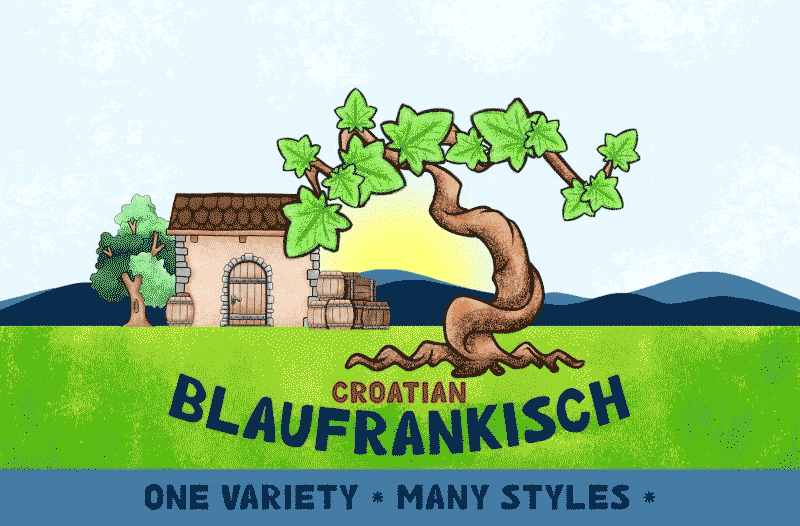
Prominently cultivated in regions like Austria (especially in Burgenland) and Hungary (known as Kékfrankos), Blaufränkisch has earned a reputation for reflecting the terroir of various vineyard sites and producing wines with distinctive personalities.
These wines typically feature dark fruit flavors like black cherry and plum, complemented by spice and herb notes.
Blaufränkisch wines maintain a good level of acidity, contributing to their freshness and moderate tannins that provide structure.
They can be enjoyed young, showcasing vibrant fruitiness, or aged gracefully, unveiling mature and nuanced characteristics over time.
The history of Blaufränkisch is deeply rooted in Central Europe, particularly in the regions of
- Austria and
- Hungary, but it also extends its reach to neighboring countries like
- Croatia,
- Slovenia,
- Slovakia, and
- Czech Republic.
In Germany, particularly in Baden, it goes by the name “Lemberger.” In Croatia, Slovakia, and the Czech Republic, it is known as “Frankovka,” while in Slovenia, it is referred to as “Modra Frankinja.”
A Taste of Blaufränkisch
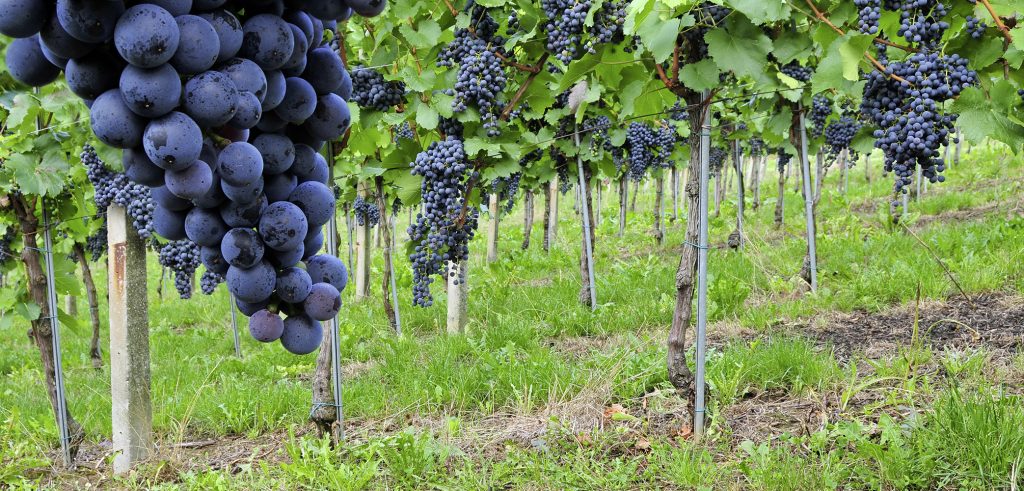
Blaufränkisch, a red wine grape variety, is celebrated for its ability to produce wines with a rich tapestry of flavors and characteristics.
Expect to encounter earthy and dark fruit flavors, reminiscent of the characteristics found in many Cabernet Sauvignon wines.
This is a common trait among many well-crafted Blaufränkisch wines, and the finest ones often exhibit a distinct mineral and herbal presence.
The taste of Blaufränkisch wines varies depending on factors such as the region of cultivation, winemaking techniques, and the age of the wine.
However, several general characteristics are often associated with Blaufränkisch wines:
- Fruit flavors: Blaufränkisch wines typically feature a medley of dark fruit flavors, including black cherry, blackberry, and plum. These flavors are often ripe and concentrated, contributing to the wine’s depth and richness.
- Spice and herb notes: Many Blaufränkisch wines offer subtle spice and herbaceous notes, with hints of black pepper, cloves, and traces of dried herbs like thyme or rosemary.
- Acidity: Blaufränkisch wines are known for their balanced acidity, which adds freshness and helps harmonize the wine’s fruitiness.
- Tannins: The tannin levels in Blaufränkisch wines can vary, but they are generally present without being overly aggressive. This contributes to the wine’s structure.
- Mineral notes: Depending on the terroir and region, Blaufränkisch wines may also display mineral qualities reminiscent of slate, gravel, or earth, adding complexity to the flavor profile.
- Ageability: Blaufränkisch wines often age gracefully, developing tertiary flavors like dried fruit, leather, and tobacco as they mature.
Frankovka: Croatia’s Take on Blaufränkisch
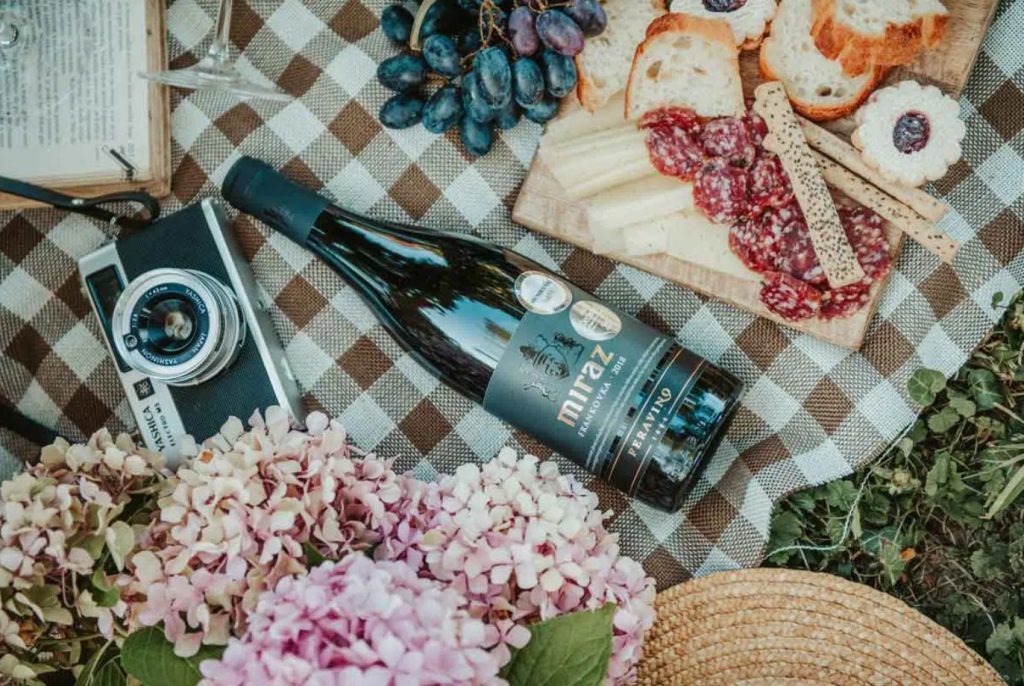
In Croatia, this grape variety is known as “Frankovka” and is widely cultivated in various regions, particularly in the continental part of the country.
Frankovka holds the esteemed status in Croatia, deeply embedded in the nation’s viticultural heritage and one of the most widely planted red grape varieties.
It thrives in several regions, including Slavonia and the Danube River region, where it has adapted to the local climatic and soil conditions.
Frankovka’s Diverse Expressions
Frankovka wines from Croatia can display a wide range of styles and characteristics, ranging from light and easy-drinking to more complex and structured.
However, Frankovka’s journey has not been without its challenges. Inconsistencies in wine production, often stemming from homemade production or indiscriminate approaches by large wineries, have hindered Frankovka from gaining the recognition it truly deserves.
On the bright side, this has led to the availability of some fantastic Frankovka wines in Croatia at competitive prices.
But it has also caused ambitious wineries to explore other introduced varieties, like Merlot and Cabernet Sauvignon, to achieve better market results.
Croatian Frankovka in Its Full Glory
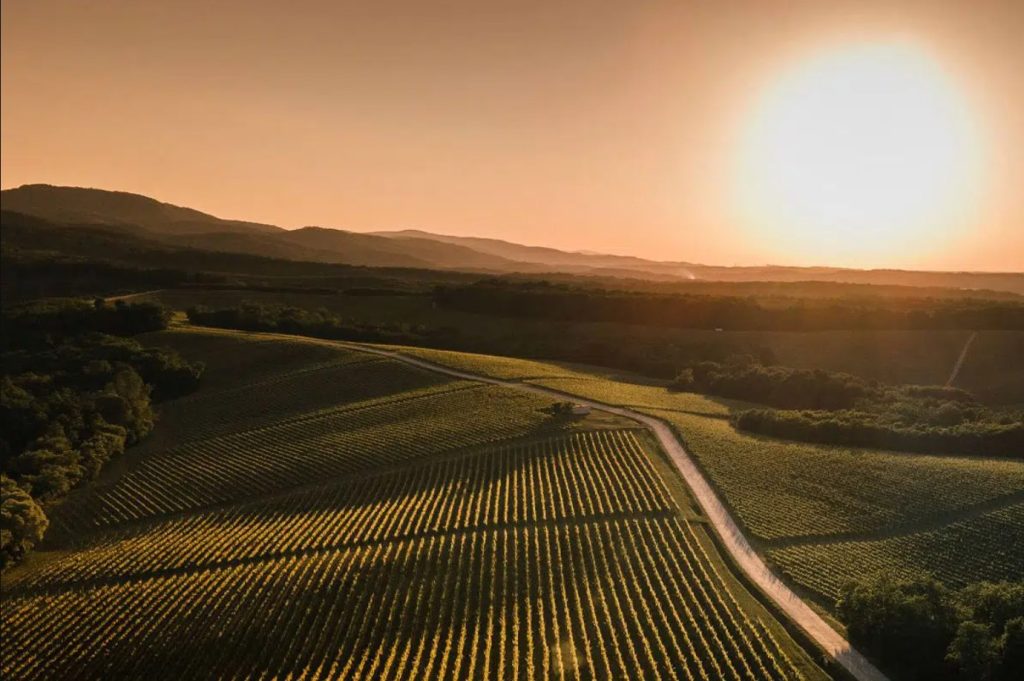
There is one notable exception – a winery that has held Frankovka in high esteem from the very beginning.
Enosophia Winery, the modern torchbearer of Frankovka tradition, is dedicated to crafting Frankovka wines that showcase the grape’s potential in various expressions.
Enosophia employs Frankovka grapes in several different styles, each aiming to capture the finest essence of Frankovka in its unique embodiment:
- Sparkling Rose (Today Rose),
- Two expressions of Rose wine (Matarouge and Dika),
- Red wine in two expressions, inox and wood-aged (Lingua Franka),
- Sweet red wines from dehydrated late-harvest grapes.
While Enosophia also cultivates other grape varieties such as Cabernet Sauvignon, Merlot, Syrah, Pinot Noir, and numerous white varieties like Chardonnay, Sauvignon Blanc, Riesling, and the indigenous Graševina, there’s one variety they hold above all others – Frankovka.
In the Feričanci region, where Enosophia unveiled a modern cellar in 2020, Frankovka stands as the heart and soul of Slavonia’s red wines.
With winemaking traditions dating back to 1804, the winery remains loyal to time-tested procedures while embracing modern techniques to enhance the quality and definition of their wines.
This meticulous approach ensures that every bubble in their sparkling rose and every sip of Lingua Franka deepen the experience, showcasing Frankovka’s full potential.
Lingua Franka: The Quintessential Frankovka
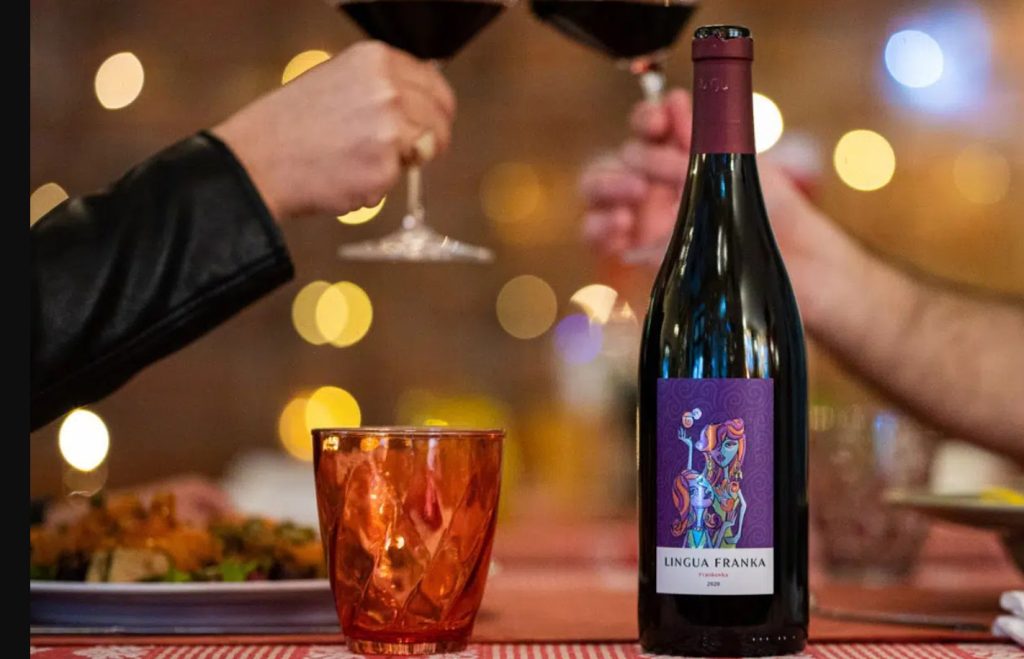
Lingua Franka is the epitome of Frankovka, featuring a typical varietal aromatic profile with blackberry and black cherry notes supported by peppery and herbal aromas.
Its not overly dry tannins and elegant freshness, along with a medium-bodied character, define it as a well-crafted Frankovka, perfect for pairing with a variety of foods.
If the allure of Croatian dry red Blaufränkisch doesn’t pique your interest, the Slavonia and Enosophia lineup boasts a diverse range of Frankovka-based wines that will surely delight your palate.
In the realm of red wines, Blaufränkisch and its Croatian counterpart, Frankovka, stand as tributes to the artistry of winemaking, embodying centuries of tradition and innovation.
Pairing Blaufränkisch (Frankovka) with Food
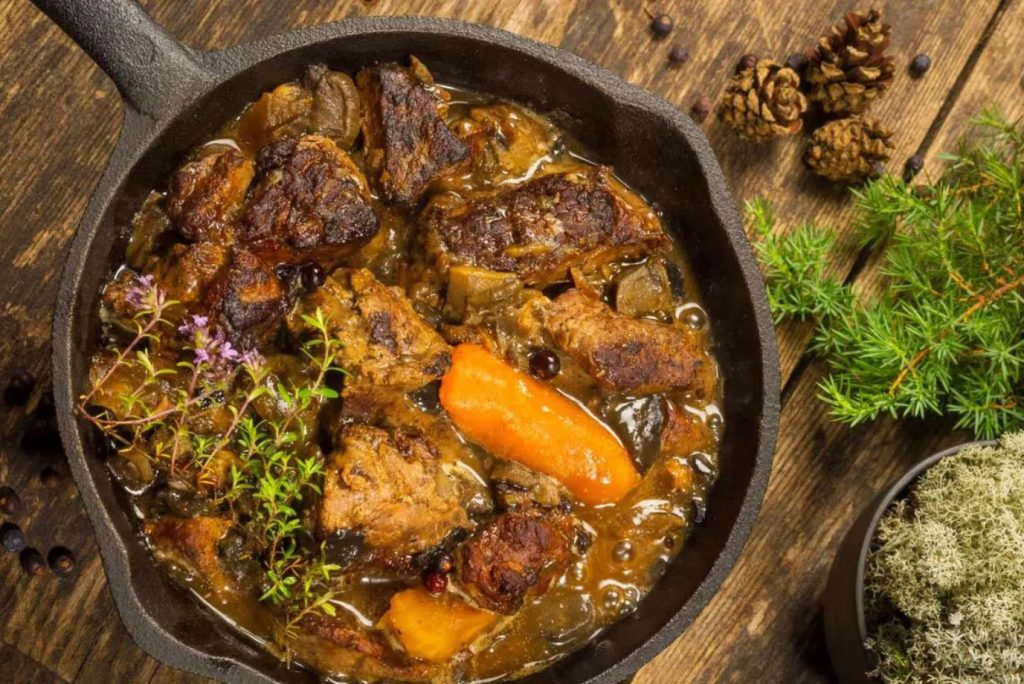
Blaufränkisch is a versatile red wine that pairs well with various foods due to its balanced acidity, moderate tannins, and flavorful profile.
Here are some food pairing suggestions to enhance your Blaufränkisch wine experience:
- Grilled meats,
- Roasted poultry,
- Game meats,
- Mushrooms,
- Hard cheeses,
- Charcuterie,
- Spiced dishes,
- Grilled vegetables,
- Game birds,
- Dark chocolate.
Remember that personal taste preferences play a role in wine and food pairing, so don’t hesitate to experiment and discover your own favorite combinations.
When selecting food pairings, consider the specific characteristics of the Blaufränkisch you have on hand.
Conclusion
As you explore the world of Blaufränkisch and its Croatian counterpart, Frankovka, you embark on a journey through centuries of winemaking tradition and innovation, celebrating the enduring allure of these remarkable grape varieties.
NOTE: The article was originally written at wineandmore.com












